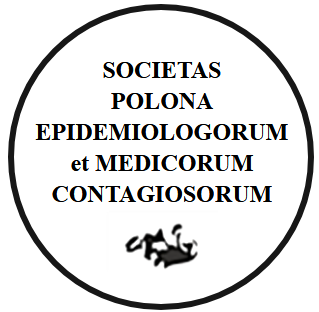RESEARCH PAPER
Assessment of the accuracy of initial diagnoses and the frequency of clinical forms of Lyme disease among hospitalized patients: a single-center study
1
Studenckie Koło Naukowe przy Klinice Chorób Zakaźnych i Neuroinfekcji, Uniwersytet Medyczny w Białymstoku
2
Klinika Chorób Zakaźnych i Neuroinfekcji, Uniwersytet Medyczny w Białymstoku
Submission date: 2025-04-15
Final revision date: 2025-08-04
Acceptance date: 2025-08-21
Online publication date: 2025-08-22
Publication date: 2025-10-03
Corresponding author
Małgorzata Kazberuk
Studenckie Koło Naukowe przy Klinice Chorób Zakaźnych i Neuroinfekcji, Uniwersytet Medyczny w Białymstoku
Studenckie Koło Naukowe przy Klinice Chorób Zakaźnych i Neuroinfekcji, Uniwersytet Medyczny w Białymstoku
Przegl Epidemiol 2025;79(2):201-214
KEYWORDS
TOPICS
ABSTRACT
Background: Lyme borreliosis (LB) is one of the most commonly diagnosed tick-borne diseases globally, caused by Borrelia spirochetes. Despite advances in laboratory diagnostics, both overdiagnosis and underdiagnosis of LB remain significant issues. Nonspecific symptoms such as chronic fatigue or musculoskeletal complaints are often misattributed to LB, creating controversy and delaying appropriate diagnosis and treatment. Objective: To analyze clinical data and diagnostic results of patients referred to the Department of Infectious Diseases and Neuroinfections, Medical University of Bialystok, with suspected LB, and to assess the frequency of its clinical forms. Material and methods: A retrospective analysis was conducted on medical records of patients hospitalized with suspected early or late LB at the Department of Infectious Diseases and Neuroinfections, Medical University of Bialystok, from January 2018 to June 2023. Diagnostics included ELISA and Western blot tests for IgM and IgG antibodies against Borrelia. Initial diagnoses were based on tick exposure and clinical presentation. Results: Records of 819 hospitalized patients were analyzed: 497 (60.7%) men and 322 (39.3%) women, mean age 55.7 ± 14.8 years. LB was diagnosed in 426 (52%) patients, including 24 (5.6%) with neuroborreliosis and 7 (1.7%) with erythema migrans. In 395 cases, symptoms and results did not clearly confirm LB, yet antibiotics were used to assess response. In 393 patients (48%), LB was excluded; the most common alternative diagnoses were osteoarthritis (31.3%) and other musculoskeletal disorders (25.1%) Conclusions: Overdiagnosis of LB may result in unwarranted antibiotic use, while delayed treatment can lead to late-stage disease. A key issue is the lack of differential diagnostics, delaying proper management of serious conditions like MS, rheumatoid arthritis, or cancer. Notably, many patients received empirical antibiotics despite not meeting clinical-serological criteria, distorting disease incidence. The current LB reporting system also requires revision, as it promotes overdiagnosis.
We process personal data collected when visiting the website. The function of obtaining information about users and their behavior is carried out by voluntarily entered information in forms and saving cookies in end devices. Data, including cookies, are used to provide services, improve the user experience and to analyze the traffic in accordance with the Privacy policy. Data are also collected and processed by Google Analytics tool (more).
You can change cookies settings in your browser. Restricted use of cookies in the browser configuration may affect some functionalities of the website.
You can change cookies settings in your browser. Restricted use of cookies in the browser configuration may affect some functionalities of the website.





